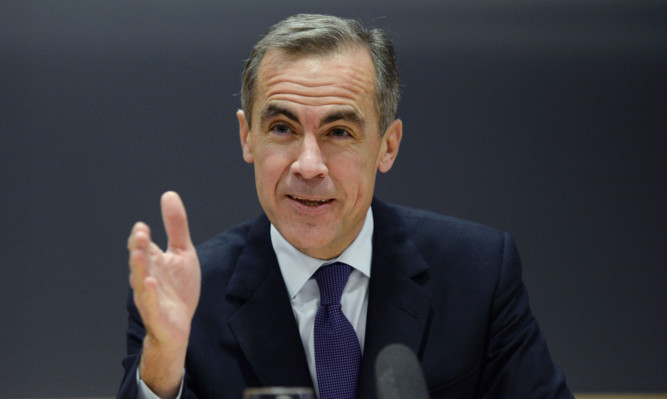Bank of England governor Mark Carney has suggested that interest rates could begin to rise at the turn of this year.
Mr Carney said he expected the bank rate to rise over the next three years from its current all-time low of 0.5%.
He said rates would likely rise slowly, reaching a level that is “about half as high as historical averages” of 5%.
But he said shocks to the economy and shifts in the exchange rate could impact on the timing and size of any interest rate increases.
His prediction builds on comments he made to the Treasury Select Committee on Tuesday, in which he indicated the UK is “moving closer” to a rise in interest rates after more than six years at historical lows.
Mr Carney told MPs that Britain is edging towards being able to raise rates based on the strength of the recovering UK economy, which was the fastest growing of the G7 nations last year.
In a speech at Lincoln Cathedral last night, Mr Carney said the Monetary Policy Committee “will have to feel its way as it goes”, adding: “There is, in fact, a wide distribution of possible outcomes around any expected path for bank rate, reflecting the inevitability that the economy will be buffeted by shocks and that monetary policy will have to adjust accordingly.”
Mr Carney said: “Short-term interest rates have averaged around 4.5% since around the Bank’s inception three centuries ago, the same average as during the pre-crisis period when inflation was at target…
“It would not seem unreasonable to me to expect that, once normalisation begins, interest rate increases would proceed slowly and rise to a level in the medium term that is perhaps about half as high as historic averages.
“In my view, the decision as to when to start such a process of adjustment will likely come into sharper relief around the turn of this year.”
Mr Carney’s comments come two days after it was revealed that unemployment has risen for the first time in two years.
The number of jobless increased by 15,000 to 1.85 million in the three months to May, according to the Office for National Statistics.
Howard Archer, chief UK and European economist at IHS Global Insight, said Mr Carney had reinforced comments from the Bank of England “seemingly preparing consumers and businesses for an interest rate hike”.
He said: “For the time being, we are maintaining the view that the Bank of England will lift interest rates from 0.50% to 0.75% in February 2016.
“But we have become markedly less confident in this call, and there is clearly now a very real possibility that the MPC could act before the end of 2015, most likely in November.”
Mr Archer added: “Regardless of whether the Bank of England first acts in late 2015 or early 2016, we see interest rates only rising to 1.25% by the end of 2016 and 2% by the end of 2017.”
